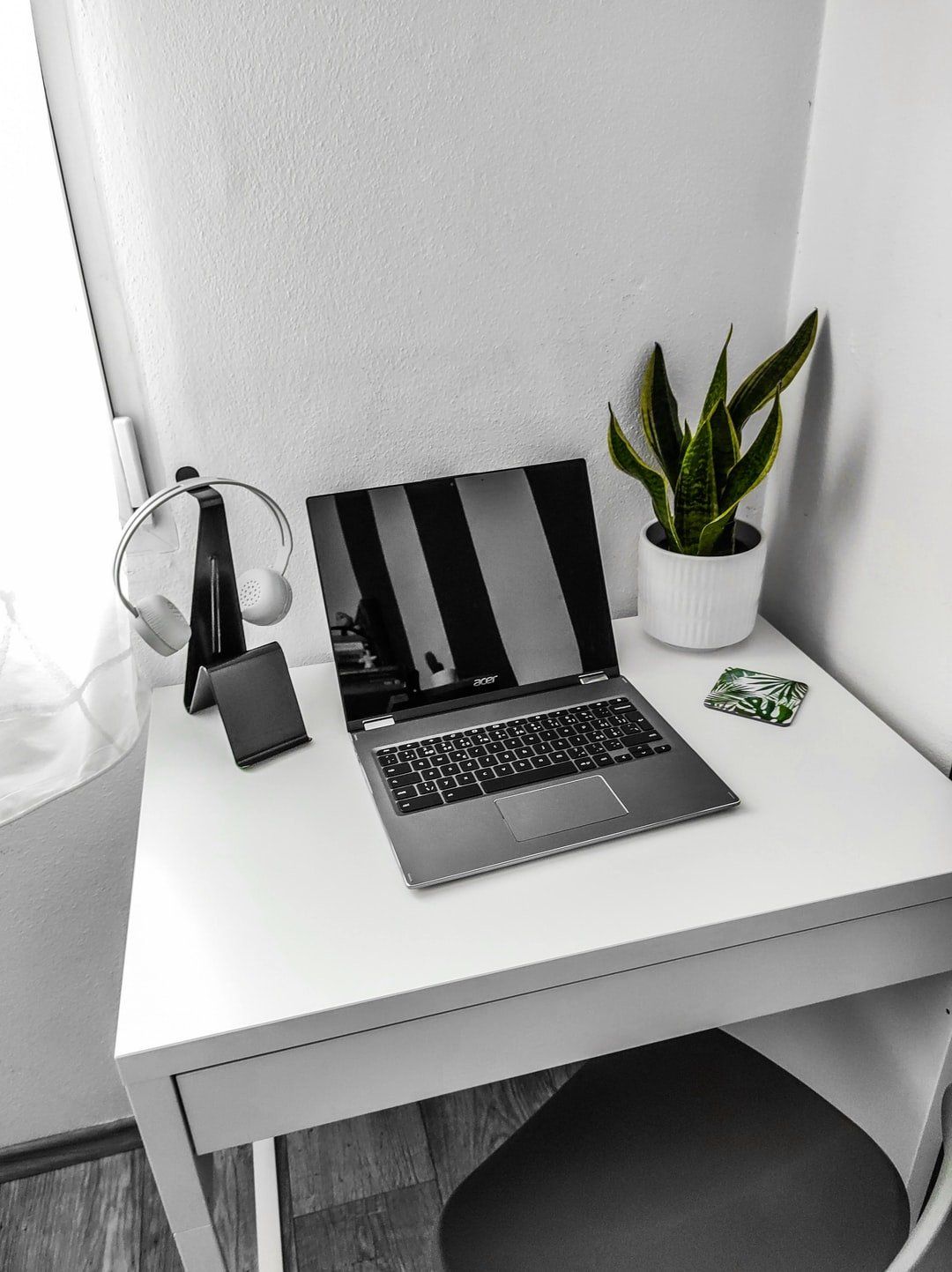Tech Trends to Watch in 2021
April 4, 2021
Not sure which tech will make a big impact in 2021 and beyond? Here are four key trends....

To say we’ve all had a tumultuous eighteen months is an understatement, but the world of technology keeps moving – even in a pandemic. That evolution means new developments are always on the way, and the impact of COVID-19 means technology has had to adapt to overcome – which means even bigger changes.
There’s a lot going on, but it can be hard to figure out which developments are changing the world and which new concepts will quickly disappear. We’ve picked out four of the biggest trends that will dominate in 2021 and beyond – read on to find out what’s here to stay.
Home Working
It’s hard to get away from this because so many of us have had to make the switch to home working. It’s undoubtedly a big adjustment, but millions of people have found that working from home is a better fit for them – and many companies have discovered the benefit, too. That means working from home will go from being a temporary move to a permanent reality for many more people.
More people working from home means more technology being used at home. We’re all familiar with video calls, but video conferencing companies aren’t the only software firms benefitting – loads of us are using collaboration apps, tracking tools and other cloud services. It’s not just software: we’re investing more in laptops, webcams, PCs, and monitors.
Kids are now learning from home, too, using many of the same technologies their parents rely on. Entire families are making more use of streaming media services and smart home technology.
In short, we’re spending more time at home and getting more done at home - and that means more tech is being used at home. It’s a massive pivot away from clunky office tech and towards streamlined, slicker apps and services.
The 5G Revolution
We’ve never been more reliant on technology, and that means we all need more bandwidth and speed. Enter 5G, which is more than 100 times faster than 4G.
This next-generation service won’t just enable faster video streaming and better gameplay – although it will do that. 5G will allow more people to use more complex VR and AR technology, more advanced cloud gaming services and more sophisticated technology in their cars.
Elsewhere, 5G is so fast that it’ll be used in factories, drones, smart cities, laptops, and routers. It’s so quick that it can serve a whole swathe of purposes that 4G just couldn’t touch.
5G services have already been rolled out in more than 35 countries, and analysts expect the world to contain nearly four billion smartphone users by the end of 2021 – and 5G’s reach will extend far beyond our handsets.
Quantum Computing
This is a next-gen system that uses quantum mechanical phenomena to solve problems that are simply too big and too complex for conventional computers. It’s serious stuff, and it’s often used to help develop new breakthroughs in science and medicine – which is why this area has seen huge growth since the start of the COVID-19 pandemic.
Quantum computers played a key role in helping map and analyse the spread of Coronavirus, and to help develop vaccines. Quantum computing is also used extensively in the financial and law enforcement industries.
Big companies like Microsoft, Google and AWS are deeply involved, and the pandemic has done even more to prove how important this tech can be – and so it’s set to become even more critical.
Edge Computing and AI
Most of us are familiar with AI, but edge AI and edge computing are the next step down this exciting path.
Lots of big technological players are now realising that conventional cloud computing has shortcomings when it comes to processing some data quickly. Edge AI and edge computing tackles this issue by bringing computational power and data storage closer to the users where it’s required. That means data doesn’t have to be sent to remote, less-efficient cloud locations to be stored or processed – which makes software more efficient and more affordable.
The future will certainly involve AI-powered edge computing and cloud computing working together, and 2020 has only accelerated its rise – so watch out for it in 2021.

The Chromebook has come a long way since the first models became available to buy in June 2011. They were once thought of as restrictive, entry-level curios that did nothing more than succeed cheap netbooks, but now the market is filled with powerful machines that can replace a conventional laptop with no loss of functionality. Humble Beginnings Chrome OS was introduced by Google exec Sundar Pichai back in 2011 and revealed the search firm’s surprising new operating system, and the first commercial devices launched in the summer of the same year. Those first machines were made by Samsung and Acer, and they arrived to great fanfare – but not a huge amount of success, with critics lamenting that they were too expensive and too restrictive to prove worthwhile. Instead of giving up, Google took its Chromebooks to the education market, where they began to thrive – they were easy to use and affordable when compared to conventional laptops. This first wave of success prompted more manufacturers to produce Chromebooks, and this success also saw them start to gain ground outside of the classroom. As time has gone on, the Chromebook’s first faults have been addressed, too. Critics said that Chromebooks couldn’t tackle enough tasks, but browser-based tools have become more prevalent and Android apps have become more powerful. It’s now possible to run your business, handle presentations and spreadsheets, edit videos and tackle the latest games using a Chromebook. The hardware has got better, too. Chromebooks are now available in all sorts of form factors: affordable machines are now joined by premium portables that have the same sort of design nous as luxurious Windows and mac OS machines, and Chromebooks can now be bought with big screens, small displays, and as versatile hybrids that straddle the line between laptop and tablet. The Acer Influence Acer was there right at the beginning of the Chromebook era, and the Taiwan-based firm has continued to be one of the big players in the market for Chrome OS-based laptops. A big part of Acer’s success still comes from the education market, and that’s all the more important now than the COVID-19 pandemic means that children are spending more time learning at home. Indeed, machines like the Acer Chromebook R13 combine the best of both worlds. This machine is 15.5mm thin and weighs 1.49kg, so it’s easy to transport, and it has a robust exterior that’ll withstand household use. It’s convertible, too, so it can be used in laptop, tent and tablet modes – which makes it extremely versatile. Educators can also access Google’s G Suite, which includes productivity tools that help pupils and teachers interact across different devices. Acer also produces Enterprise versions of its Chromebook machines, which include more powerful processors, IPS displays, military standard durability testing and lightning-fast SSD and wireless internet options – alongside Chrome Enterprise, which can be used to update, manage, and monitor dozens of devices at once – ideal for busy IT departments. There are loads of consumer machines in the range, too, with slim, light and powerful models available at different screen sizes and prices, and with conventional laptops and hybrid machines all available too. There’s no doubt that Chromebooks have come a long way since their introduction ten years ago – in 2020, for instance, Chromebooks outsold Apple’s Macs for the first time. With more form factors, more power and more features now available on a wider range of machines, there’s never been a better time to get a Chromebook. Credit: Mike Jennings

Processors are the heartbeat of any good computer, but it’s difficult to know what chip to choose when there are dozens of CPUs available with different prices, specifications, and advantages. It’s especially tricky if you’re planning to get a high-end chip, because a CPU could easily become the most expensive component in your PC. That sort of investment should last years, so it’s important to make the right decision. Whether you’re buying for work, play or for an everyday home system, we’ve done the hard work so you don’t have to – here are the best processors to buy in 2021. Game On Processors are vital for gaming PCs – if you have a weak CPU then it can bottleneck your graphics card and ruin your framerates. If you’re building a mid-range gaming PC then your best bet is the AMD Ryzen 5 5600X, which costs £350 and serves up a fantastic six-core design with a boost speed of 4.6GHz. It’s easily got the power to blitz through 1080p and 1440p gaming alongside the top esports titles, and it can handle everyday computing and work too. If you’ve got a little more cash, the eight-core Ryzen 7 5800X is a superb upgrade. It’ll also be a great option for 4K gaming and streaming. Many people combine gaming with work, especially when it comes to streaming, photo- and video-editing and design. If that’s you, the 5800X should be your chip of choice – and if you need to tackle particularly difficult tasks then you should think about the £540 Ryzen 9 5900X, which is a fantastic twelve-core CPU that’ll underpin your work and play for years. There are good budget choices, too. Intel’s £140 Core i5-10400F is a capable six-core part that boosts to 4.3GHz, and Intel’s Core i3-10100 costs just £100 and can handle 1080p gaming. Those on the tightest budgets should investigate the AMD Ryzen 5 3400G, which costs £170 and includes its own graphics chip that can run esports titles – so you don’t have to buy a graphics card. Work It Out If you’re building a work PC, it’s important to consider exactly what work you’ll be doing before you decide how much to spend on a new processor. If your working day consists of photo or video editing, rendering, content creation, design, modelling or other demanding tasks, then you should be buying an AMD processor. AMD’s latest Ryzen 5000-series chips are better than Intel’s equivalent CPUs across virtually every multi-threaded task, and AMD has overtaken Intel in single-threaded performance – an area where Intel led until recently. The big choices concern budget and capability. If you’re building a system for mainstream photo-editing then the Ryzen 5 5600X is about as low as you should go – it’s a capable chip, but if you push it then you’ll find its limits. If you want to tackle professional photo and video work then the Ryzen 7 5800X will use its two extra cores to prove far more capable. If you’re a serious professional who works with 4K video, tough CAD tools or other workstation-level software then you’ll have to spend more – the aforementioned 5900X is a fantastic, powerful choice, and the £750 Ryzen 9 5950X is a sixteen-core monster that will scythe through the toughest applications. People whose work involves Office applications and browser-based tools don’t require as much CPU horsepower. If you just need a PC that can handle Office, Chrome, and some media playback then the Core i5-10400F, the Ryzen 5 5600X or even Core i3-10100 will easily get the job done. When it comes to buying a processor – whether it’s for work or play – its speeds, core counts and price are the main considerations. They’re not the only things to think about, though: also examine the motherboard that you’ll be using and its various features, and the cooling that you’ll need – only affordable CPUs tend to include coolers these days. Credit: Mike Jennings



